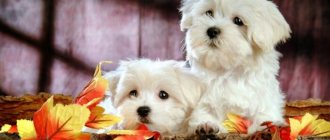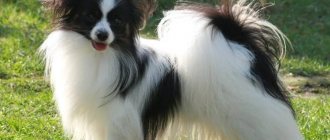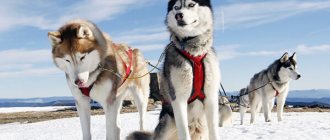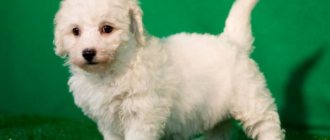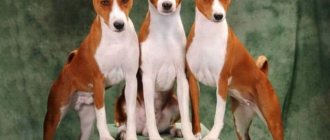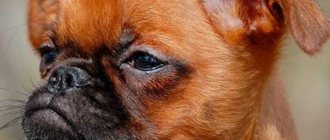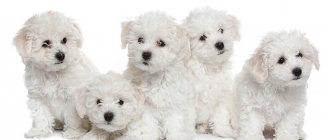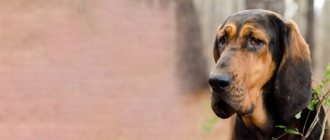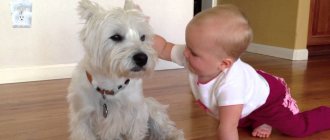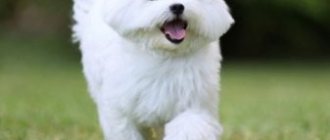Among the decorative breeds, one of the most popular is the Bichon Frize. In another way, these dogs are also called French lapdogs. This is a small, fluffy dog with white curly hair. From the very beginning, representatives of the breed were used as companions. These affectionate, cheerful dogs are very sociable. And their unusual appearance makes them look like a plush toy. But before getting a Bichon Frize, you need to study the pros and cons of keeping and care, reviews from breeders and owners. Below are photos of Bichon Frize dogs:
- Features of the head and muzzle
- Education and training
- Feeding
Description of the Bichon Frize breed
Popularity 231st among 263 dog breeds
Lifespan:
13-15 years old
Breed group:
Decorative
Height:
25-30 cm
Country of origin:
Belgium, France
Average price:
30-35 thousand rubles
Weight:
2.5-3 kg
Latest articles Cat health
Rabies vaccination for cats: choice of vaccine, necessity, schedule 01/22/2022 4 0 0
Selection and adaptation
TOP 20 best cat breeds for families with children 01/22/2022 25 0 0
Vaccinations, anti-worming treatments
The choice of vaccine depends on the epidemiological situation in the region and the veterinarian. Pathogenic microorganisms and viruses constantly mutate. Therefore, vaccination should be carried out with drugs that are most effective against pathogens present in a given region.
Puppies born from vaccinated bitches have maternal antibodies. This is why it is so important to check the mother’s veterinary passport when purchasing. But as the baby grows up, he loses some of these antibodies. By 2–3 months their number approaches zero. Therefore, vaccination begins at 6–8 weeks. Revaccination is carried out at intervals of 2–4 weeks.
Bichons are more often vaccinated with the French vaccine and the Dutch Nobivak series. The vaccination regimen is chosen by the doctor. Each vaccine has instructions for use. Using multicomponent drugs, you can build a step-by-step scheme that will protect your pet from plague, hepatitis, parvovirosis, parainfluenza, leptospirosis, rabies (Nobivak labeled DHPPi+LR).
It is important to protect your pet from parasites. Anthelmintic drugs are given before vaccination. For ticks and fleas, you can use drops on the withers (they do not spoil the coat) or wear a special collar.
Advantages and disadvantages
- Pros:
- have permanent friendliness, get along with children;
- amenable to training, the owners will note the Bichon Frize’s eagerness to learn something new;
- hypoallergenic and lacking a characteristic odor.
- Minuses:
- the light curly coat of the French lapdog requires careful daily care and a monthly trip to the groomer;
- tendency to eye diseases and allergies;
- The dog doesn't mind begging for food from the table.
Mixed breeds obtained from lapdogs
Despite their attractive appearance, lap dog mixes are not suitable for a show career. They can only be purchased as pets. If the beauty of your pet comes first for you, then pay attention to the following representatives:
- Maltipoo. The Poodle mix has a curly coat and high learning abilities.
- Russian color. It resembles the Italian one, but differs in the color of its coat. Russian colored lapdogs are never white. Most often its color is brown, gray, black or beige.
- Mi-Ki. A cross between the Papillon and the Japanese Chin, it has a short muzzle, large round eyes and furry ears.
- Korean. A variety of Maltese with a shorter muzzle, pronounced eyes, a square body shape and massive paws.
- Chinese. It is distinguished by a very rounded muzzle and huge bulging eyes. This doll-like appearance gives the Chinese lapdog a resemblance to a plush toy.
- Lhasa Apso, or Tibetan. The owner of long straight hair covering the entire body. Distinguished by the presence of a long mustache and beard.
- Dwarf, or mini-maltese. Brought out by the Americans. Despite its attractive appearance, the animal often gets sick and injured due to its too short muzzle and low weight.
- Dwarf Bichon Frize. The mini version of the French has the same problems as the dwarf Maltese. The internal organs of such dogs are often underdeveloped, which shortens their overall life expectancy.
In addition to the mestizos listed, there are others. The lapdog is crossed with Yorkies, Spitz, Pekingese, miniature dogs and other small breeds, but the result rarely lives up to expectations. Most of these animals are born with life-threatening disabilities or do not take on the best qualities of their parents.
Key facts
Loyalty, affectionateness, playfulness, mischief - these are the characteristics of the Bichon Frize breed. Reviews from the owners of French lap dogs speak about one thing: these mischievous little balls of fur win the hearts of people and make people smile with their touching seriousness. Photos, pictures, videos cannot convey the charm of these dogs.
The Bichon Frize is a companion dog, a little mischievous, smart, completely silent, and has the indescribable charm of a walking cloud. Responds to sonorous calls. She loves children, active walks and everyone's attention to her person. Occasionally, a dog may express indignation with a menacing growl or a demonstrative refusal to eat. It is easy to train, but due to its character it can be undisciplined.
The dog practically does not shed, but the dense undercoat and white hair twisted into tight spirals requires careful grooming and daily combing. The description of the Bichon Frize breed explains that the dogs are hypoallergenic due to the absence of the characteristic dog odor and shedding.
Other names of the breed are used along with this one by the International Canine Association: French lapdog, curly-haired bichon.
The shortened name, "barbichon", comes from the merger of two French words "barbet" and "bichon". The dimensions of the Bichon Frize are miniature: weight in adult females and males ranges between 2.5 and 3 kg, height (height at the withers) is 25-30 cm. These values are typical for dogs in the “standard” category. Countries of origin: France and Belgium.
The lifespan of the Bichon Frize is long: they live approximately 12-15 years. The price for a dog starts from 30,000 rubles.
What does a French lapdog look like, what colors are characteristic of it? The Barbichon is a dog of a “dry” build, with an elongated muzzle tapering towards a black nose and playful black beady eyes. Often puppies are born cream colored and only become pure white by 12 months; No more than 10% of the cream “additive” is allowed in an adult.
Main characteristics
The breed is recognized by all important dog breeding organizations. Breed standard: No. 215 (adopted 05/11/1998):
- Weight - 3-5 kg.
- Height - 20-30 cm.
- The eyes are black, with black edging.
- Nose is black.
- The physique is strong, the paws are short, the constitution is dry, and the bones are solid.
- The forehead is flat, merging into the bridge of the nose. In preparation for exhibitions, Bichons are cut so that they look like a cloud, and their heads look huge and round.
In preparation for exhibitions, Bichons are cut so that they look like a cloud.
- The coat is thick, long, curly, and always white. At an early age there are spots, but as they grow older they disappear.
- Personality: cheerful, sociable, friendly, courageous, courageous, adaptive.
- They are easy and fun to train.
- Active, mobile lifestyle.
Bichons are the progenitors of all types of lapdogs
History of the origin of the Bichon Frize
The ancestors of French lap dogs (descended from water barbettes) were active travelers. The homeland of these dogs is considered to be the Mediterranean, where people were able to recognize mouse-hunting animals as faithful helpers. Soon, not a single ship sailed without the ancestors of the Bichon Frize: the dogs masterfully hunted mice.
Just as animals influenced the atmosphere on a ship, so life on the high seas influenced them. The dog's size has decreased. The fur turned white to protect the animal from overheating. The eyes are darkened (restriction of sunlight reaching the retina). The nose became black, which made it possible to better evaporate moisture from its surface.
Slowly but surely, the dogs left the ships and settled in Italy (Italian lapdog), Spain (Maltese lapdog), France (Bichon Frize), and the Canary Islands (Tenerife Bichon). Even in France, the Bichon Frize was originally called the Tenerife Bichon.
The curly-haired Bichon was very popular during the Renaissance and was considered an expensive breed. Puppies often became valuable gifts or “bargaining chips” in large transactions. Many paintings of this era, in which noble people were always accompanied by a small curly dog, can confirm the elite nature of the Bichon Frize.
The long life at court played a cruel joke on the curly-haired lapdogs: the animals, not adapted to the harsh conditions, did not survive the Second World War well. Only the efforts of French and Belgian breeders helped restore the breed's numbers. The Bichon Frize was registered by the International Canine Association in 1933. The breed standard was formed a year later.
Breed traits
Breed traits (on a 5-point scale)
| Bichon Frize | |||
| Activity | in the house | 3.2 | |
| on the street | 3.4 | ||
| Obedience | training | 3.2 | |
| strangers | 2.7 | ||
| Domination | in family | 2 | |
| over dogs | 2.3 | ||
| Defending your territory | from people | 2 | |
| from dogs | 2.3 | ||
| Sociability | in family | 4.9 | |
| with strangers | 3.9 | ||
| with dogs | 3.7 | ||
| Concentration | in family | 1.3 | |
| in front of strangers | 1.8 | ||
| with dogs | 1.8 | ||
| Aggressiveness | in family | 1.3 | |
| to strangers | 1.8 | ||
| to the dogs | 1.8 | ||
| to cats | 2 | ||
| Family behavior | calmness | 3.7 | |
| demand for affection | 4.5 | ||
| excitability | 3.8 | ||
| playfulness | 4.2 | ||
| excessive barking | 2.2 | ||
| behavioral breakdowns | 1.9 | ||
| Tolerance for children | up to 4 years | 3.5 | |
| over 4 years old | 4.3 | ||
| Institutional use | watchman | 3.6 | |
| bodyguard | 1.4 | ||
This breed is often compared to the following dog breeds: Maltese (Maltese Bichon), Toy Poodle, Pomeranian, Royal Poodle (Great Poodle), West Highland White Terrier.
Bichon Frize on the grass
Clipped Bichon Frize
Bichon Frize on a rug
Cheerful Bichon Frize
Appearance of a French lap dog
General impression
There are many types of lap dogs - Italian, Maltese, French... What does a French Bichon Frize look like? The curly-haired Bichon is a small fluffy cloud, he is graceful and elegant. The fur twisted into spirals is pure white, black eyes look at the owner devotedly, but cunningly. Small size (height for females reaches 23-29 cm, for males - 25-30 cm), low weight (from 3 to 5 kg) make the Bichon look like a plush toy.
Head
The head, proportional to the body, is distinguished by a flat skull, which appears rounded due to the hair.
The brow ridges are weakly expressed. The ears, set above the eye line, form an equilateral triangle and hang along the cheeks; heavily covered with hair. Usually the dog actively moves its ears if something attracts its attention. The muzzle, wide at the base, is shorter than the skull; the bridge of the nose is straight. The round dark eyes are normally set, the whites are not visible when viewed directly. The rounded black nose is grainy and shiny. Dark thin lips are thin, the lower lip is not visible when the mouth is closed. The cheeks are flat and high cheekbones. Both jaws are wide, with even incisors; a scissor bite is preferred, with a full set of teeth.
Neck
Thin near the skull, the neck smoothly widens and goes into the shoulders. Long, in proportion it is a third of the length of the entire body.
Torso
The photo of the Bichon Frize clearly shows that its body is compact, with well-defined withers. The back is straight, there is a slight bend in the lumbar region, the muscles are well developed. The wide, rounded croup has a slight slope. The chest is well developed, reaching down to the elbows; the ribs are springy. The lower part of the chest rises towards the moderately tucked abdomen; The sides are lean, the skin is without folds.
Forelegs
The front legs are straight, the bones are thin. The shoulders are oblique, forming an angle with the top of the paw. The elbows located close to the chest smoothly flow into the straight forearm. The feet are round with black pads and claws, well assembled. When standing, the dog places its paws straight.
Hind limbs
The hind limbs of the Bichon Frize begin with a wide pelvis, thighs with well-developed muscles, and vertical legs parallel to each other. The knee is neither turned in nor out. The shin is similar in length to the thigh. The hock joint is well defined, the metatarsus is thin. The paws are rounded, the characteristics of the pads and claws are the same as those of the front ones.
Tail
The tail is carried moderately high and does not curl or touch the back. Doesn't stop. Possibly touching the back with fur. When moving, the tail carries gracefully and does not hang.
Movements
When walking, the movement of the paws is parallel. Trotting is accompanied by a head carried high and a tail well curled over the back. The hind legs are especially powerful and give good acceleration. Movements are free and graceful.
Wool
Girls and boys squeal with affection when they see French lap dogs that look so much like little clouds! The dog's undercoat is soft and dense. The coat is curly, voluminous due to the spiral-shaped outer hair. The length ranges from 7 to 10 cm. The curly Bichon will not get wet even in a downpour due to its thick undercoat.
Color
What colors predominate in the Bichon Frize? Up to 12 months, the puppy's coat may be beige (a mixture of white and champagne), covering no more than 10% of the animal's body. An adult dog has a bright snow-white coat.
Size
The height of the Bichon Frize at the withers is small and reaches a maximum of 30 centimeters. These are truly miniature dogs, ideal for home keeping. The weight of the Bichon Frize is also small and ranges from 2.5-3 kg.
Breed standard
The breed standard adopted in 1998 is currently in force. According to him, the Bichon Frize is classified as a lapdog. The ICF classification classifies them as a group of decorative breeds and companion dogs. They have a recognizable appearance: snow-white curly fur, black intelligent eyes, and a compact, strong build. These are small dogs, their height should not exceed 30 cm, and their weight should not exceed 3-5 kg.
Features of the head and muzzle
The head is proportionally folded, gradually tapering towards the nose. The skull is flat, the transition to the nose is poorly defined. The nose and eye rims should be black. The eyes are round, large, dark. The lips are thin, also black, the upper one covers the lower one. The bite is scissor, sometimes straight. The ears are hanging, triangular in shape, thin. They hang down to the corners of the lips and are covered with long hair.
Body type
The neck is long, thin at the base of the skull, widening towards the withers. The body is compact, rectangular in shape. The chest is deep, the back is flat, wide, the stomach is tucked. The withers are weakly defined, the loin is slightly curved. The tail is set low and is half the length of the body. Covered with long hair. The dog does not roll it into a ring when it lifts it, but places it parallel to the line of the back.
Limbs
The forelimbs are thin, straight, set parallel. The elbows are turned back, the shoulders do not protrude. The hind legs are muscular, the hips are wide. The paws are rounded, the toes are collected. The pads are round and black.
Coat and color
The Bichon Frize's coat is long, up to 10 cm, and voluminous. It should be soft and curly. Silky to the touch, springy. The undercoat is dense and downy. It is very thick and does not allow water to pass through. According to the standard, only white color is allowed. Sometimes puppies have beige spots, but adult dogs shouldn't have them. In France it is not customary to cut Bichons' hair. Only trimming the fur on the paws and face is allowed. But in Russia the fashion for cutting these dogs has spread. The hair on their body is shortened, a collar is left, and the head is shaped into a ball. Photos complement the description of the appearance of the breed representatives:
Bichon frize with apple
Bichon Frize inspection
Bichon Frize in nature
Bichon Frize muzzle
Disqualifying faults
Bichon Frizes that participate in exhibitions and breeding must strictly comply with the standard. Dogs that have the following deficiencies are not allowed in:
- straight or corded wool;
- black, red spots on the coat, cream color;
- malocclusion;
- lack of pigmentation of the nose;
- light eyes;
- tail curled into a ring.
Bichon Frize personality
What makes the Bichon Frize so special? A rare curly-haired Bichon will turn out to be a lazy “sleepyhead”: most dogs of this breed contain a kind character and an endless supply of energy in a small body. Friendliness, activity, and playfulness are especially evident when the Barbichon is walking on the street. Other animals do not disturb the dog. Sociability is a distinctive feature of the French lapdog, which is especially evident when playing with people. Dogs feel comfortable at home - both in an apartment and in a cottage.
The puppies quickly adapt to their new home. Living side by side with children is not scary for French lap dogs. Little Barbichons quickly and with interest get to know the world. Adult dogs are also actively learning about life.
Due to their pretty appearance, pleasant character and love of communication, Barbichons often become participants in “pet therapy” in children's hospitals and nursing homes. In addition, especially well-trained animals become good watchmen - strangers are frightened by their ringing voice.
Who is the curly-haired Bichon dog suitable for? People who are not afraid of changes and something unexpected in the usual course of days. If you get a Barbichon, be prepared to lead an active lifestyle and have a lot of fun with a devoted friend - for example, looking for a snow-white Bichon Frize in the snow outside in winter!
The character of these dogs
The Bichon Frize has a complex character. But these are quite obedient dogs that are easy to train. They are very active, cheerful and playful. Despite their small size, Bichons are brave and resilient. They do not like to sit still, they are very inquisitive, and will bravely defend their owner from any threat with loud barking. These dogs have gained popularity as a pet due to their good-natured disposition and easy-going behavior. They are not at all aggressive, affectionate, and become attached to all family members. They are suitable even for inexperienced owners, easily adapt to any conditions, and take root even in a small apartment. But those who are rarely at home should not get Bichons. These dogs cannot stand loneliness; out of boredom and longing for their owner, they can display destructive behavior, chewing things, shoes, and furniture.
Bichon Frizes are capable of reading human emotions. Therefore, they are often used for canistherapy. These dogs visit hospitals, nursing homes, and help children with developmental disabilities. They are sociable and try to make people laugh. They prefer to be among a large number of people. They especially love children and support all pranks and fun games. A Bichon will never hurt a child, even if it accidentally hurts them. These dogs are very peaceful, do not enter into conflicts and get along with all pets. They are friendly to strangers and love guests. But they react adequately to aggression. If something threatens them or family members, they will bark and may bite. They will always warn the owners by voice that someone has approached the door. We can highlight the following character traits of the Bichon Frize that they inherited from their ancestors:
- energy;
- cheerfulness;
- playfulness;
- communication skills;
- curiosity;
- goodwill;
- intelligence;
- obedience;
- devotion.
Education and training
The Bichon Frize dog is easy to train. These are very smart pets and easily learn even complex commands. Therefore, they often perform in the circus, participate in shows and dog sports. But in order to teach them something serious, you will have to work hard and be patient. These pets have a flighty character, they cannot concentrate for long and quickly lose interest in activities. Another feature of Bichons is that they do not tolerate rough treatment. You cannot scream, much less hit your pet. During training, you need to be affectionate, but persistent. It is better to use treats as encouragement. For disobedience, you can scold in a stern voice.
Decorative dogs do not need to be trained, but they must be taught simple commands: “come to me”, “place”, “no”, “stay”. It is also necessary to socialize the pet so that it reacts normally to noise from the street, cars, strangers, and other dogs. You need to raise a puppy from the first days of his appearance in the house. You need to immediately make it clear that he is not the boss in the house. You should not spoil your baby or allow him liberties. It is necessary to prohibit biting, barking frequently, and gnawing things. All family members must follow the rules of dog behavior in the house. An ill-trained lap dog will become capricious and uncontrollable. But the good thing is that Bichon Frizes are not prone to dominance and are not touchy.
Education and training
How to raise a curly-haired Bichon? Quite simply, because lap dogs are very smart! The dog easily learns basic and complex commands. Thanks to this, the curly-haired Bichon is often seen in the circus arena.
First, you should understand that a proud Barbichon will not tolerate disrespectful treatment: shouting or brute force. Raising and training a Bichon Frize ideally begins at two to three months, when the puppy’s temperament has not yet deteriorated. You should increase the training time and the amount of exercises gradually, not forgetting to give your pet time to rest and motivate him with something edible.
In addition, timely training will help wean your French lapdog from its characteristic habit of gnawing and biting its fingers during games.
Pets rarely tolerate eye washing, ear cleaning and brushing. These procedures are necessary to maintain the dog’s beauty, especially in autumn, winter, spring, when wearing a warm suit is necessary, but do not forget about them in the summer. If your pet refuses to sit still, treats will be a reward for good behavior.
Is it possible to stop admiring a trained and raised Bichon Frize? The answer is clear - no!
What else should you buy to keep a Bichon?
- Bowls. Two separate bowls or a 1 liter automatic feeder.
- A basket or other place where the dog can sleep comfortably.
- A collar, a two-meter leash and an address tag with the dog's name, address and phone number of the owner.
- Tray.
- The aviary will help accustom the puppy to the tray.
- A carrier for trips to the veterinarian, on a visit or to exhibitions.
- Products and care items in large quantities.
- Rubber toys for the prevention of tartar.
- Veterinary first aid kit.
- Feed and supplements.
Bichon Frize Health and Diseases
Possible diseases
French lapdogs are lucky with their genes; they rarely have congenital diseases.
But allergies, especially to food, are common (the actual question is what to feed your French lapdog). Allergies cause the color of the fur on the paws between the toes, under the tail, around the eyes and ears, and on the face to deteriorate. The curly-haired Bichon is also susceptible to obesity, the treatment of which can take a long time. The French Bichon is prone to the following diseases:
- hypothyroidism - dysfunction of the thyroid gland;
- dermatitis is an inflammatory disease of all layers of the dermis;
- epilepsy;
- instability of the second cervical vertebra;
- urolithiasis disease;
- cataract - clouding of the lens;
- entropion - inversion of the eyelids;
- corneal clouding;
- diabetes;
- allergic reaction to food, vaccinations.
The curly-haired Bichon's weekly grooming routine includes brushing his teeth, bathing, and trimming his muzzle and genitals.
Diseases of the musculoskeletal system are not typical for representatives of the Bichon Frize breed. But their joints are fragile, especially before 12 months, which can lead to paw fractures. The life of a Bichon Frize is relatively long (from 12 to 15 years), and from birth to old age, the Barbichon remains optimistic and loyal to its owner.
Reproductive health
The first estrus in female dogs occurs at approximately 10-12 months, but veterinarians advise planning offspring only during the second or third estrus, since the dog’s body is not yet ready for pregnancy and childbirth. The difficulty of childbirth depends on the size of the bitch and the number of puppies. If the Bichon Frize is not allowed for breeding or the owner does not want to bother with the puppies, sterilization will be a profitable option.
Breeding
It is best to breed Bichon Frize after consulting with a veterinarian and examining the animal in advance.
A female dog reaches puberty during her first heat, at the age of 8–12 months, although deviations in one direction or another are possible. Intervals between heats can also range from 4 to 12 months. Mating during the first heat is not recommended, since by this age physical development has not yet been fully completed. Puberty in males occurs at the age of 14–18 months.
Mating
Milk is only good for puppies; adults should be given yogurt or kefir.
Dogs need to be bred during the female's heat period. Two weeks before mating, both Bichons should be dewormed and tested for mycoplasmosis. Mating is prescribed on the 2nd–3rd day of this stage of the reproductive cycle, when the eggs ready for fertilization finally mature. In order for the male to feel more confident and successfully cope with his task, mating is carried out on his territory. If the male is young and inexperienced, consultation or assistance from a canine instructor is advisable. The mating itself should be done in the morning, before feeding and after walking (possibly together) both dogs. In the case where the attempt was unsuccessful, a control mating is recommended after a day or two.
If both dogs are healthy, in good condition, the mating went as expected, there is no doubt that the pet will become pregnant. 60 days after mating, bichon babies will be born.
Caring for puppies
It is better to make a small enclosure for puppies so that they do not accidentally get hurt while exploring the situation.
Basic care for a Bichon Frize puppy that comes into your home includes full grooming:
- regular combing and washing;
- a haircut;
- treatment of the area around the eyes;
- trimming nails.
Brush your pet daily using a comb (preferably made of wood) and a brush made of natural bristles.
Bathe the puppy once every two weeks, using professional pet cosmetics for white fur.
Additionally, the cleanliness of the fur on the face, chest and paws can be maintained if water and food residues are not allowed to get on them. For this purpose, Bichon owners are recommended to purchase bowls and drinking bowls of a special “dry whisker” design.
If necessary, clean the anus and groin area with a damp cloth and blot thoroughly with terry cloth.
The first hygienic haircut is done when the Bichon is one month old, and repeated as the hair grows back.
Treat the area around the eyes with a special lotion, removing streaks of tears and dark discharge as often as necessary.
While the baby does not go for walks, his claws, unlike adult dogs, do not wear down naturally. They need to be trimmed regularly: no more than 2 mm of the claw is cut off with guillotine tweezers and sharp corners are trimmed with a nail file. The procedure is performed for the first time at the age of two weeks and repeated as necessary.
Features of feeding and diet
Representatives of small breed dogs are characterized by obesity due to an incorrectly chosen or unbalanced diet (when BZH standards are not met). Barbichons are no exception, so you should carefully monitor what the dog eats. Two “menu” options for dogs are useful: dry food and natural food. Only the owner decides what to feed the animal. It should be noted that with natural feeding, vitamin complexes must be present in the diet.
How many times should you feed your Bichon Frize? How much should I feed my puppy? A one-month-old puppy is given five or six meals a day in small portions; It is possible to include dairy products and raw vegetables in the diet. At the age of 5-8 months, the curly-haired Bichon is transferred to three meals a day. Feeding of an adult occurs twice a day.
What food should I feed my curly-haired Bichon? Is it possible to give any products other than drying? The choice of food is an important matter. The level of health depends on what dry mixture the dog will eat. Often a Barbichon has an intolerance to a particular ingredient, which can lead to allergies. It will be beneficial to introduce raw vegetables into your dog's diet.
Often, veterinarians will advise you to buy a puppy feeding guide or an adult dog feeding guide if you have no experience keeping an animal.
What to feed
It is convenient to feed small toy dogs with high-quality ready-made diets. Dry food of at least premium class is suitable. They provide complete nutrition. You can switch your pet to natural feeding. But in this case, you will have to carefully calculate the portions and additionally give vitamins and supplements for the coat. This requires enormous effort from the owners. Therefore, they often choose dry food or a mixed type of feeding (ready-made diets and some natural products - meat, offal, vegetables).
Puppy diet
The puppy's feeding schedule depends on its age. The smaller it is, the more often it is fed (from 3 to 5 times a day). They do this strictly at a certain time. Leftovers are always removed. Only water should always be freely available. By the age of 1–1.5 years, the puppy is transferred to 2 feedings a day.
Adult dog diet
Adult dogs are given food 2 times a day. You can’t do this before a walk and immediately after it. The food is carefully chosen. Some types of ready-made diets cause increased lacrimation, which is extremely undesirable. The breed often suffers from allergies, so you need to choose a food that does not cause them.
It is necessary to monitor the weight of pets, they are prone to overeating. You can notice the problem by looking at the maklaks. These are bones in the croup area, a kind of “waist” of dogs. It should be palpable well. If maklaki are difficult to find, it means that obesity has begun.
Maintenance and care
How to care for a French lapdog? This breed is suitable for allergy sufferers (due to the lack of shedding), but lazy people cannot cope with frequent walking of the dog or caring for it. Long-haired dogs need to be brushed every day - white hair requires careful grooming.
After long walks, the Bichon Frize needs to be bathed, carefully washing off the dust from the fur and rounded paws, carefully cleaning the face, eyes and nose using cotton pads. If your dog behaves strangely while washing, it may be that water has gotten into his ears. It is also necessary to monitor the condition of the Bichon Frize's oral cavity, because if there is an excess of simple carbohydrates in the diet, caries can form on the teeth.
Keeping and caring for a Bichon Frize includes monthly visits to the groomer to keep the dog in good condition. Grooming is a range of animal care services: cutting hair, claws, cleaning ears, mouth. Even if the curly-haired Bichon is not a show-class dog, it is recommended to have it cut by a professional.
Nicknames for boys and girls
What to name a dog is always a burning question for any potential owner. Some people take it as a basis that the pet has French roots, others look at external data or characteristic features.
For example, male dogs are often called:
- Jacques;
- Cupid;
- Archie;
- Fluffy;
- Snowball;
- Umkoy;
- Persom;
- Orleans.
For females choose names such as:
- Snowflake;
- Gabi;
- Leela;
- Roxy;
- Pushinka;
- Selma;
- Sherry;
- Sophie.
Tips for choosing a puppy
In Russia, the Bichon Frize breed has become popular relatively recently, and people do not know what a French lapdog puppy should look like. Meanwhile, the appearance of month-old purebred puppies is almost no different from the appearance of mongrels.
How to choose a puppy to be happy? Firstly, if the purpose of the purchase is participation in exhibitions, it is recommended to pay for a consultation with a dog handler; The cost of the consultation includes assistance in choosing an individual with a minimum number of defects or their complete absence. Secondly, the best choice would be to buy a French lapdog from a kennel. Bichon Frize puppies from kennels are purebred and in good health. Thirdly, you can communicate with your future pet in advance to eliminate excessive aggressiveness, cowardice, and nervousness.
List of Russian nurseries where Bichon Frize dogs are bred:
- "Gentle velvet" (Moscow);
- "Imperial gold" (St. Petersburg);
- "Kuner's" (St. Petersburg);
- “Moment of glory” (St. Petersburg);
- "White Rivendel" (Novosibirsk);
- "White Star" (Korolev);
- "Yarika's" (Murmansk);
- "Exotic Paradise" (Chekhov).
Having chosen a dog, do not forget to ask the breeder for a puppy certificate (there is information about the individual’s strengths and vices, physical characteristics), and a veterinary passport with vaccination marks in it. The price of a puppy directly depends on these documents, as well as on the individual’s admission to breeding.
Walking and exercise
In foreign nurseries, special open areas are built for walking Bichons. Our owners of white lumps face problems. After a walk on dusty asphalt, the fur coat loses its whiteness, and in slush and rain it can suffer greatly.
The best place for walking is a low lawn. There the baby can run around to his heart's content without spoiling the fur. In bad weather, you don’t have to take your pets outside at all. They quickly get used to the tray. But you can’t do without physical activity. A walk is not only an opportunity to solve physiological needs, but also communication, socialization, and physical development of the puppy.
Tendency to diseases, vaccinations
Pets have good health, but they are predisposed to the following diseases:
- diabetes;
- allergy;
- dermatitis;
- epilepsy;
- urolithiasis disease;
- atlantoaxial subluxation;
- dislocation of the kneecap;
- hypotrichosis;
- eye diseases (cataracts, corneal dystrophy);
- congenital deafness;
- inversion of the eyelids (entropion).
Pets may suffer from infectious diseases: enteritis of various etiologies, kennel cough (canine flu) and others. Many dangerous diseases can be avoided by wisely using vaccination.
How much does a Bichon Frize cost?
How much does a Bichon Frize puppy cost? A young French lap dog will cost an average of 30,000 rubles. A pet, a future participant in exhibitions, is usually born to champion parents: the title adds at least 20,000 rubles to the cost. That is, a show-class dog can cost from 50,000 to 90,000 rubles.
In addition, there is a category of puppies that are not allowed for breeding due to defects in appearance; the price of a Bichon Frize with a defect is significantly lower - 20,000-25,000 thousand rubles. After the sale, good nurseries continue to monitor the life of their graduate.
The Bichon Frize is a cute mischief maker, a charming fluffy cloud, and a charming watchman. The dog will be a faithful friend to its owner throughout its long and interesting life.
Do you like the article? 0
Owner reviews
Most owners of this breed of dog speak of the Frieze as real members of their family, who, however, need to devote a huge amount of time and properly care for the animal’s coat. Some people say that the breed does cause allergic reactions, and therefore it is recommended to initially communicate with representatives of French lap dogs. Separately, they talk about the presence of a number of diseases that are inherent in this breed.
As a conclusion, we can say that the Bichon Frize is an ideal dog for a family, very people-oriented, who will need to devote a lot of free time, otherwise the four-legged pet will turn from a white and fluffy angel into a complete nightmare for its owner.
